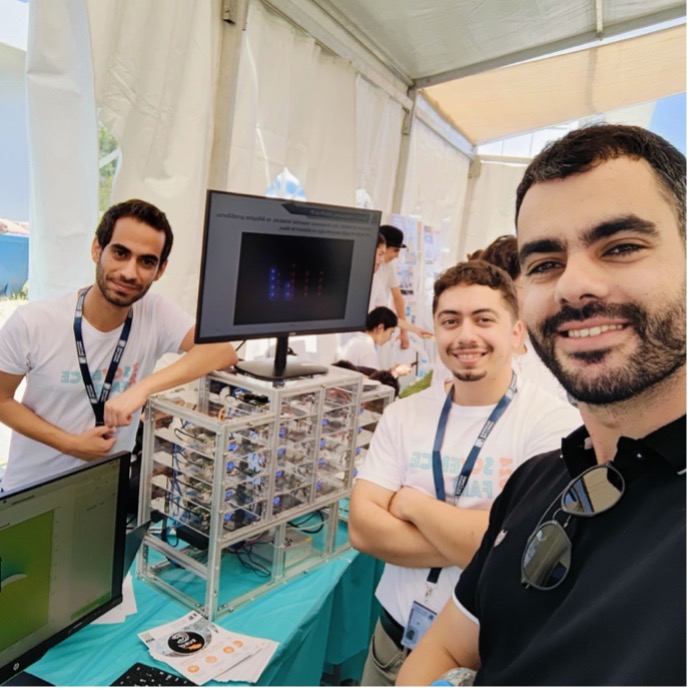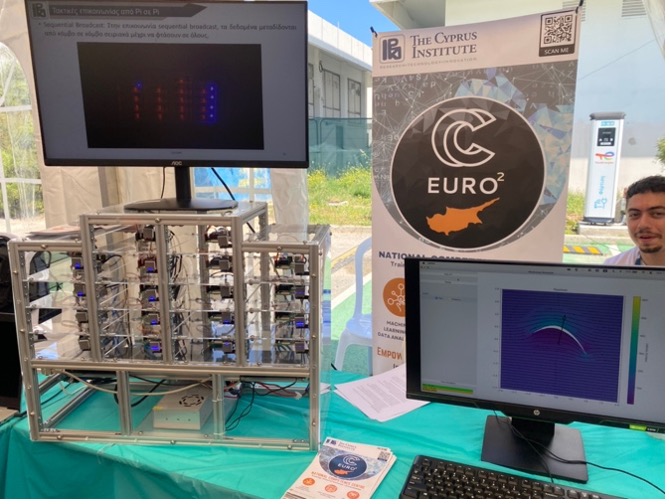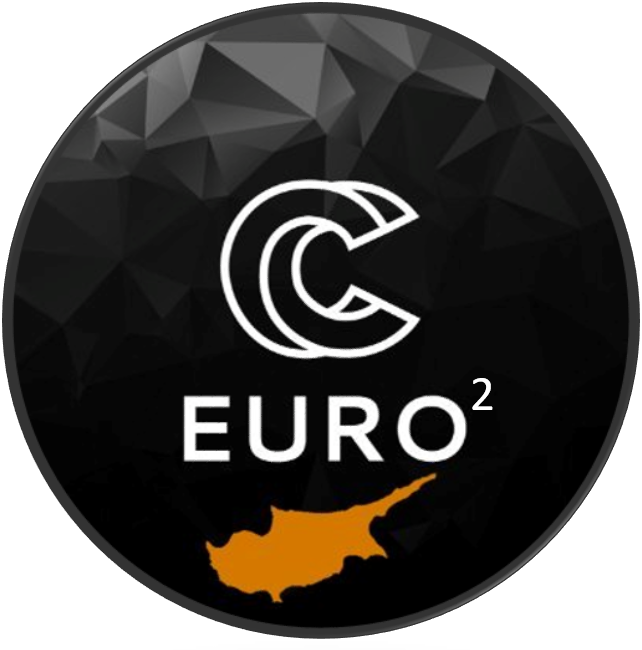On 17th April 2024, NCC Cyprus unveiled Zephyr, a miniature supercomputer no larger than a suitcase, at the local sCYence Fair 2024. Designed to demystify the complex world of supercomputing, Zephyr made its debut to inspire young minds. This project, powered by 18 Raspberry Pi units, embodies the spirit of collaboration and technological innovation.
Early in the fair, Zephyr captured the attention and interest of young attendees with its interactive simulations and flashing LEDs. It quickly transformed complex concepts of high-performance computing (HPC) into accessible, hands-on learning experiences for young people.



Implementation Process and Methodology
Zephyr, our miniaturized supercomputer, is designed to make the complexities of high-performance computing approachable, using 18 interconnected Raspberry Pi boards. Each board simulates the functionality of supercomputer nodes but on a scale suitable for educational environments. The initial step involved selecting Raspberry Pi computers because of their compactness and their capability to mimic the nodes of a supercomputer. Each board measures 85mm x 56mm x 17mm and features a CPU with 4 cores, allowing multiple processes to run in parallel, a fundamental characteristic of supercomputing nodes.
The construction of Zephyr required careful assembly and planning. The nodes are divided into 16 compute nodes and 2 controller nodes, all housed within a specially designed clear perspex case. This casing, crafted using SolidEdge, a sophisticated 3D CAD software, not only ensures the components are securely enclosed but also provides transparency for educational observation and interaction. The design process with SolidEdge was pivotal in achieving a functional yet visually accessible structure that invites curiosity and exploration.
Connectivity among the nodes is established via Ethernet cables connected to three switches, forming a network that allows the nodes to communicate and share data, similar to a supercomputer’s interconnect. Each node and switch is individually connected to multisocket adapters that converge at a transformer, ensuring that Zephyr functions efficiently from a single power source, a setup that simplifies the overall power management.
The nodes are equipped with colored LED lights programmed to indicate various operational statuses, including CPU core usage and metrics like memory and temperature. These LEDs not only add to the aesthetic appeal but also provide an immediate visual feedback of the system’s operation, enhancing the educational value by showing real-time data processing loads.
Zephyr’s Usage
Zephyr is designed as an educational tool that doubles as a functioning model of a supercomputer. It runs interactive applications such as the ‘Design an Aerofoil’ and ‘Coastal Defenses’ games, developed by EPCC, which simulate real-world problem-solving scenarios. These applications are excellent for demonstrating the capabilities of supercomputers in performing complex computations and simulations, thereby making high-level technology accessible and comprehensible to individuals of all ages. Through these engagements, Zephyr fulfills its role as both a teaching tool and a demonstration model, showcasing practical applications of computational science and encouraging interactive learning.
Social and Technological Impact
Zephyr serves as a powerful tool for education and engagement, and promotes maker culture, technology, research, innovation, and digital skills development within the STEM sectors. By introducing young people and the general public to the operational principles of supercomputers through hands-on interaction, Zephyr demystifies advanced technology and stimulates interest in computational science and engineering. This project not only educates but also inspires participants by showcasing how individual components work together to solve complex computational problems.
The clear casing of the mini-cluster allows viewers to see the technology at work, fostering a deeper understanding and appreciation for the integration of hardware and software in tackling real-world issues. Through its implementation, Zephyr embodies the spirit of innovation and encourages young individuals to explore technology’s possibilities, fostering curiosity and providing the tools for the next generation of innovators to think critically about how to use technology in sustainable and socially beneficial ways. The interactive games developed for Zephyr serve as practical examples of applying theoretical knowledge. These games illustrate the application of STEM principles in everyday challenges and underscore the importance of computational tools in design and decision-making processes. By enabling participants to interact with these simulations, Zephyr bridges the gap between theoretical knowledge and practical application, making learning engaging and impactful.
